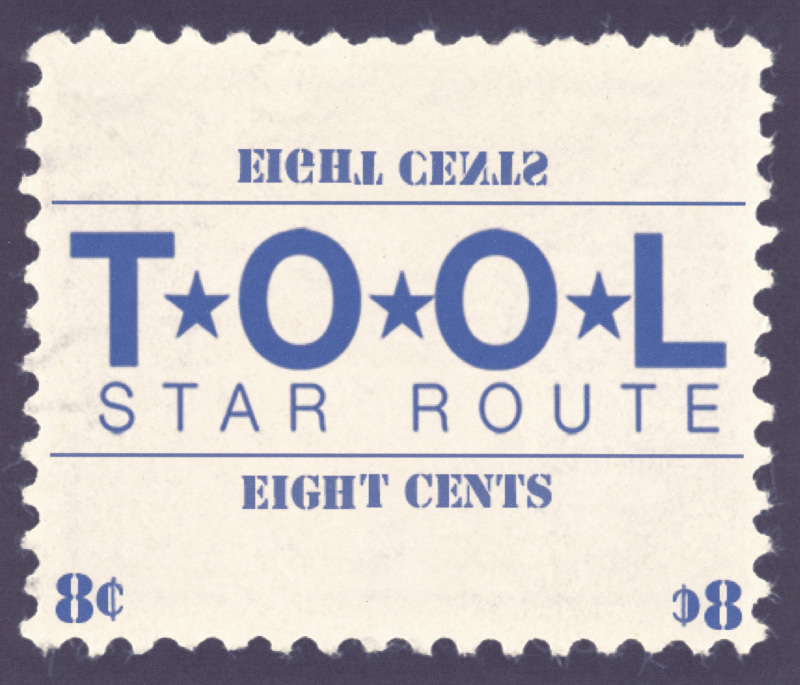
Introduction
Digital modes of communication have caused a tremendous shift in the way that we experience, remember and relate to one another. Communicating via email, text messaging, Facebook and Twitter is immediate, often impersonal (in addressing a multitude instead of an individual) and favors brevity–a sharp contrast to letter writing, which is an intimate, time-based process. Written correspondence implies the accumulation of experiences, which are relived and reorganized as they are written about in a voice intended for an individual recipient. The letter itself is folded, enveloped, addressed, stamped and transported to the post office. The time spent waiting for a reply builds anticipation and allows for developments in the experience that was shared in the initial correspondence. Not only has the digital age affected our fundamental paradigm of communication, it is a direct cause of the financial decline of the United States Postal Service, a government agency that affects every citizen everywhere in this country. Since 2006, the USPS has experienced a 20 percent decline in the amount of mail that was delivered and is reporting steadily increasing annual revenue losses.
This proposed residency with the USPS revolves around sending artworks to randomly chosen addresses with an invitation to send back a written reaction to the piece. By offering the opportunity to participate directly in creating a dialogue around the work we hope to develop a public art project that will connect on a more personal and intimate level.
Objectives
• Draw attention to and explore what is being sacrificed as digital forms of communication eclipse written correspondence
• Encourage communication between the art world and a wider audience
• Promote alternative forms of art circulation
• Generate support for the United States Postal Service
Proposal
TOOL proposes to develop a model for a residency program that could be instituted in any post office by any artist wishing to participate. The artist in residence would receive a start-up kit that would enable them to carry out this project with minimal funding at their local post offices. The residency would be carried out in two phases: a mailing to circulate art and elicit written correspondences responding to the art and the temporary establishment of a correspondence “station” in the post office.
To initiate the project, TOOL would ask 25 artists to donate a drawing/collage/artwork on a 4×6 card. These cards would be duplicated and sent out with an invitation to write a response on an accompanying blank 4×6 card.
Residency Phase One:
The participating artist would mail out 25 envelopes (containing a copy of an art card, a blank card and explanation of the project) to a random residential address in zip code of the participating post office (taken from the white pages of the phone book). The blank cards would be pre-addressed and stamped so the responses could be sent back to the post office where the artist-in-residence would collect them.
Residency Phase Two:
The artist would sit in residence at the post office on a set schedule. During this time, they would interact with customers by sharing the art cards and responses collected in the initial phase of the project and invite customers to participate in the project. The artist would spend the down time creating stationary by drawing/collaging on or using recycled junk mail. The stationary would be handed out to customers who pledge to participate in the project by responding to an art card or who commit to using to write a personal letter.
At the end of the residency, TOOL would collect the response cards. Eventually, TOOL would oversee a growing archive of varied reactions to the 25 original art cards. The project could be exhibited by displaying each art card with the corresponding reaction cards.
Conclusion
According to the USPS Five Year Strategic Plan for 2009-2013, they are seeking to “collaborate to grow the business” and go on to say:
We cannot do everything we need to do by ourselves. We will reach out to collaborate with our customers, suppliers, employees, and the academic and technical community to develop new services, new approaches, and profitable new applications for mail.
We believe the USPS will be receptive to our proposal and will recognize the many aspects in which the residencies would benefit the community by increasing awareness about both art and written communication.
*Celerity, Certainty, Security: An Act of March 3, 1845, took steps to reduce mail transportation costs. Congress abandoned its preference for stagecoaches, with contracts to be awarded to the lowest bidder for what “may be necessary to provide for the due celerity, certainty and security of such transportation.”1 These were known as “celerity, certainty and security” bids. Postal clerks shortened the phrase to three asterisks or stars (***). The bids became known as star bids, and the routes became known as star routes.